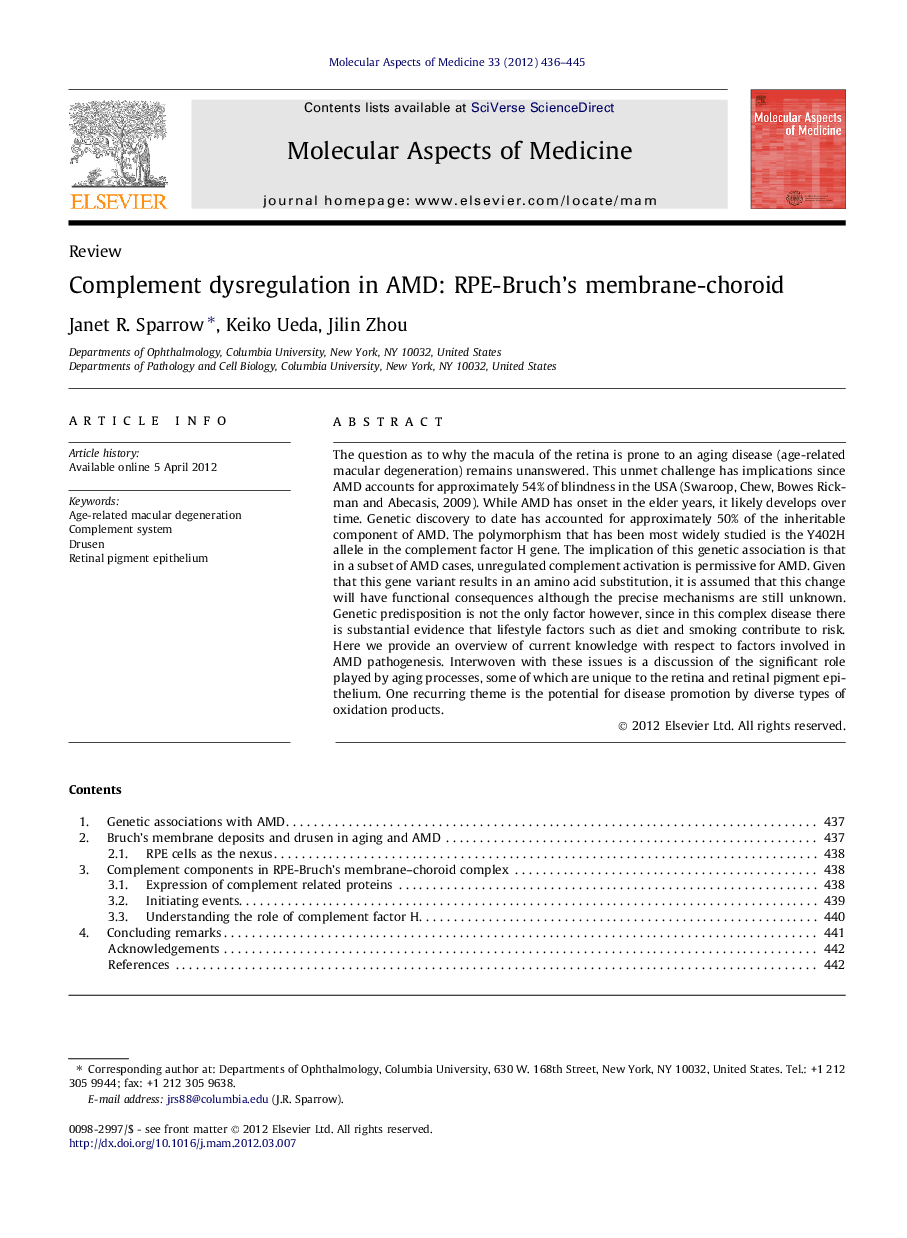| Article ID | Journal | Published Year | Pages | File Type |
|---|---|---|---|---|
| 1995841 | Molecular Aspects of Medicine | 2012 | 10 Pages |
The question as to why the macula of the retina is prone to an aging disease (age-related macular degeneration) remains unanswered. This unmet challenge has implications since AMD accounts for approximately 54% of blindness in the USA (Swaroop, Chew, Bowes Rickman and Abecasis, 2009). While AMD has onset in the elder years, it likely develops over time. Genetic discovery to date has accounted for approximately 50% of the inheritable component of AMD. The polymorphism that has been most widely studied is the Y402H allele in the complement factor H gene. The implication of this genetic association is that in a subset of AMD cases, unregulated complement activation is permissive for AMD. Given that this gene variant results in an amino acid substitution, it is assumed that this change will have functional consequences although the precise mechanisms are still unknown. Genetic predisposition is not the only factor however, since in this complex disease there is substantial evidence that lifestyle factors such as diet and smoking contribute to risk. Here we provide an overview of current knowledge with respect to factors involved in AMD pathogenesis. Interwoven with these issues is a discussion of the significant role played by aging processes, some of which are unique to the retina and retinal pigment epithelium. One recurring theme is the potential for disease promotion by diverse types of oxidation products.
